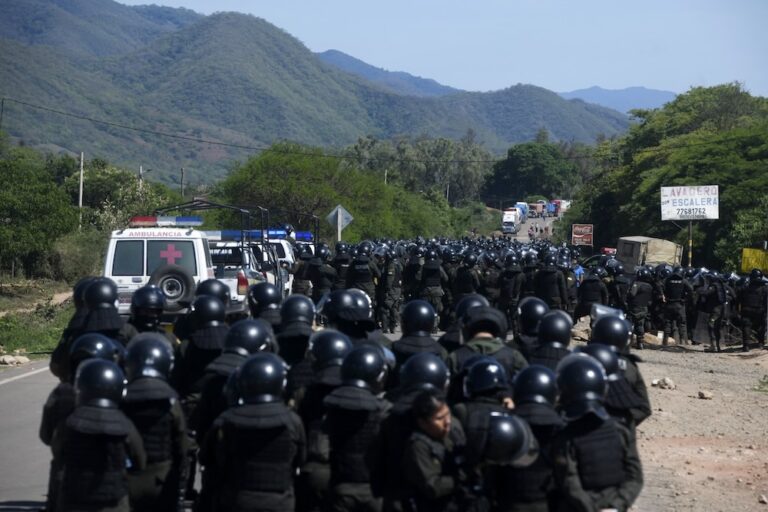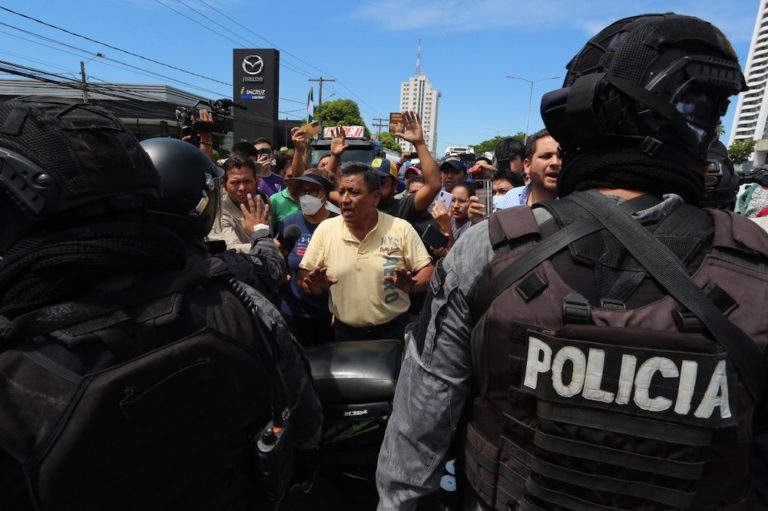(IPYS/IFEX) – On 16 September 2008, the headquarters of Canal 9 Red Uno television station, located in the Recoleta area of the city of Cochabamba, in central Bolivia, was attacked with an explosive device that destroyed the building’s windows and those of adjoining houses. Osvaldo Rioja, the television station’s press chief, told the National Press […]
(IPYS/IFEX) – On 16 September 2008, the headquarters of Canal 9 Red Uno television station, located in the Recoleta area of the city of Cochabamba, in central Bolivia, was attacked with an explosive device that destroyed the building’s windows and those of adjoining houses.
Osvaldo Rioja, the television station’s press chief, told the National Press Association (Asociación Nacional de la Prensa, ANP) that at the time of the explosion a technician who was inside the building heard voices at the entrance, followed by the sound of a vehicle’s engine as it left the area.
It is not know who is behind the incident although Rioja said that a few days before the attack he received threats on his cell phone warning him that Canal 9 Red Uno would be the next media outlet to be “taken down”. Red Uno is a privately-owned, independent station.
The explosive was thrown near Red Uno’s transmission antenna but did not damage it, although it did blow a hole in the roof of the main studio.
Fire Chief Gonzalo Cuéllar said the attackers used dynamite with a slow fuse, which gave them time to escape before the explosion. He advised other media outlets to implement security measures.
The governor of Cochabamba, Rafael Puente, visited the station and condemned the attack on it.
Red Uno is the second television station, after the Unitel television network’s Canal 4 station in Yacuiba, to suffer an attack with dynamite causing material damages. The investigation into the attack on Canal 4 has come to a standstill in the Public Prosecutor’s Office, although the Senate’s Constitution and Justice Commission is also investigating it.
The ANP will continue to investigate the attack on Red Uno.
In other incidents, between 12 and 16 September, three television stations and approximately fifteen radio and press journalists were once again the target of attacks by groups of both government supporters and opponents in different parts of the country.
In addition, three journalists working for the national press who were reporting from Cobija, the centre of the violent confrontations taking place in northern Bolivia, said that the armed forces are hindering coverage of the events, and as such are violating the constitutional rights of the press in the midst of the “state of siege” declared by the government in that region.
On 16 September, journalist Carlos Lazcano, of the Unitel television network, said that he and his camera operator were the target of shots fired by soldiers in Cobija.
According to Unitel spokespersons, the network’s journalistic team was near the Cobija airport preparing to film the arrival of a light aircraft when soldiers opened fire on the journalists. When the journalists complained, one of the soldiers said that filming is prohibited during a state of siege.
The Unitel team, together with a number of other journalists working for the national and foreign press, arrived in Cobija via the Brazilian border due to the fact that the region’s airport is under the control of the military and the government is preventing the media from accessing it.
The ANP conducted legal investigations and found that freedom of expression rights and the right to work are not suspended during a state of siege. As such, the restrictions being imposed by the Bolivian government constitute a violation of constitutional rights.
On 12 September in Cochabamba, central Bolivia, approximately 30 people who were shouting slogans in favour of the Movement towards Socialism (Movimiento al Socialismo, MAS) government attempted to enter the Unitel network’s building in order to stop the station from broadcasting.
On 16 September in La Paz, groups of demonstrators that support the government attempted to enter the headquarters of both Unitel and the PAT television network. Police used teargas to control the demonstrators.
Franco Ávalos, Unitel’s press chief in La Paz, told the ANP that since the beginning of the conflict between the government and the opposition, these types of groups have harassed the network on four separate occasions. In addition, Unitel’s Canal 2 television station in Oruro has suspended its broadcasting since 5 August after its headquarters were attacked by MAS related groups, according to information provided to the ANP by the station’s director, Juan Carlos Soria.
On 16 September, PAT technician Miguel Chuquimia was hit in the head with a stone. The resulting cut on his eyebrow required two stitches. Chuquimia was part of a mobile unit that positioned itself near the El Alto military airport in La Paz, where the governor of Pando, Leopoldo Fernández, was taken after having been detained. The journalists covering the event were verbally and physically assaulted by members of the Popular Civic Committee (Comité Cívico Popular), a pro-government group.
Government supporters also hurled insults at journalists covering the news at the congressional building and the Government Palace, in La Paz’s Plaza Murillo.
In a press release, the ANP condemned the actions against journalists and demanded that the authorities conduct investigations to determine who is behind them.
Updates alerts on attacks on journalists and media outlets during the political crisis: http://ifex.org/en/content/view/full/97053
Updates the Unitel case in Oruro: http://ifex.org/en/content/view/full/96025
Updates the Canal 4 case: http://ifex.org/en/content/view/full/94812


